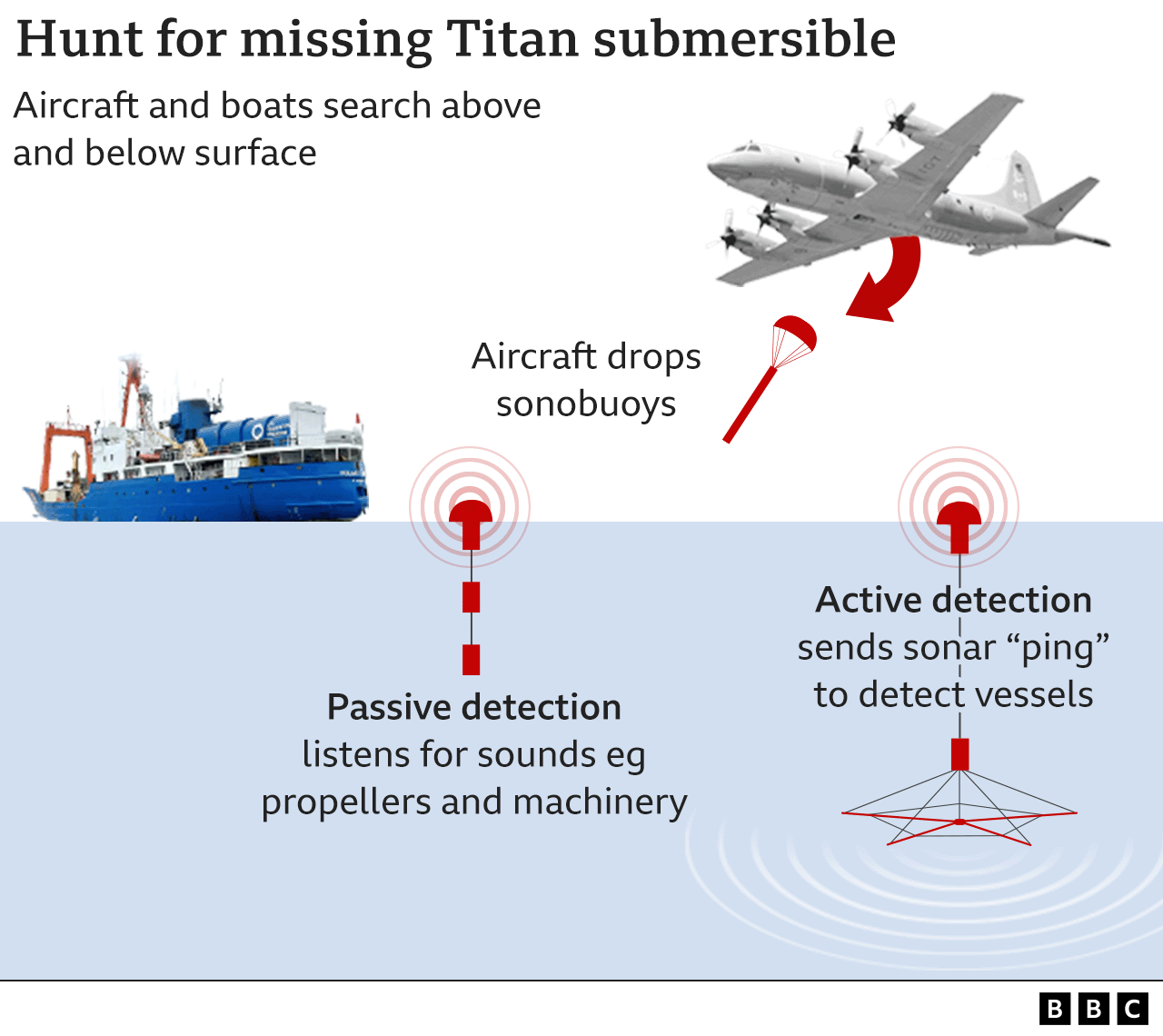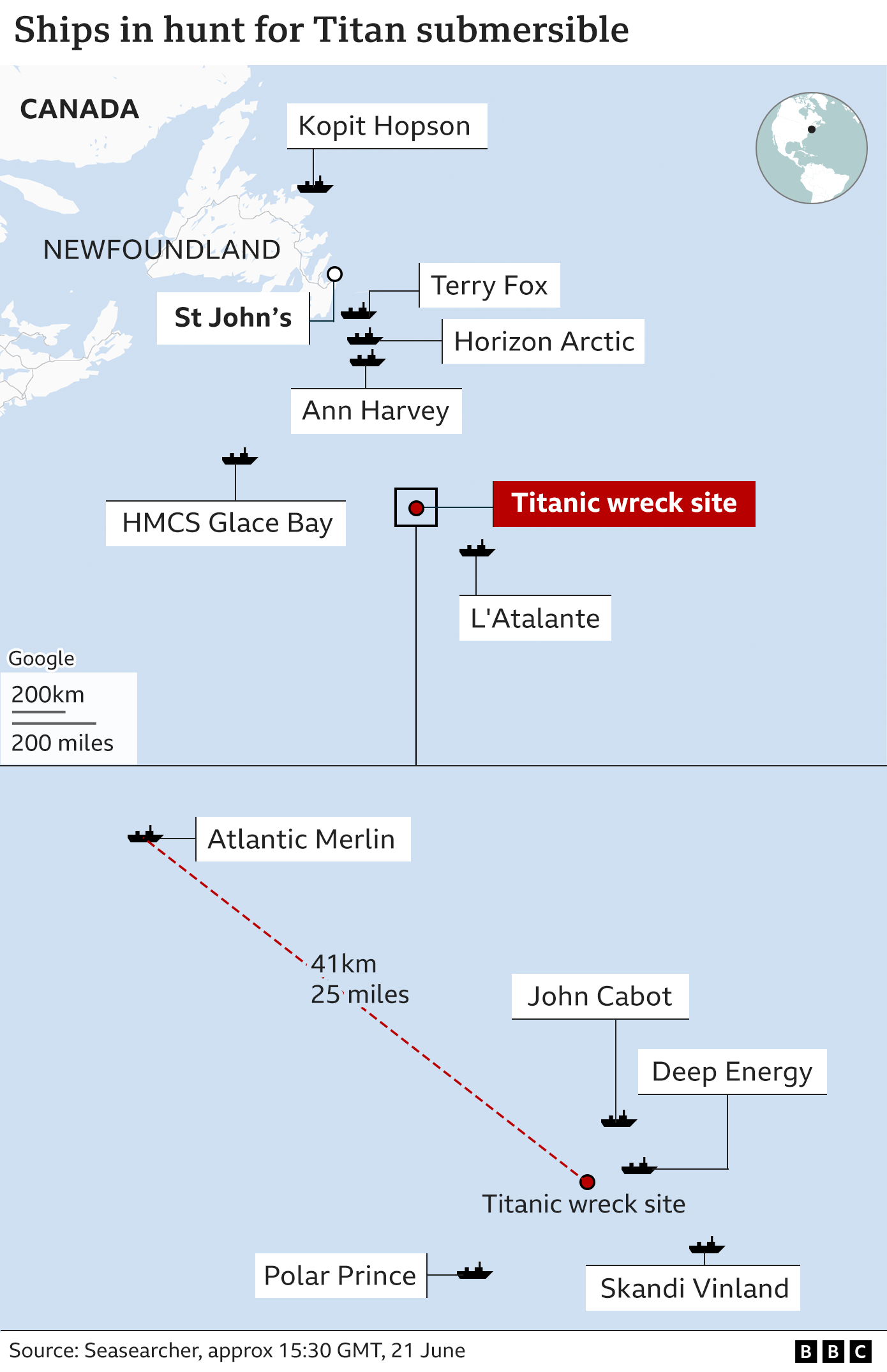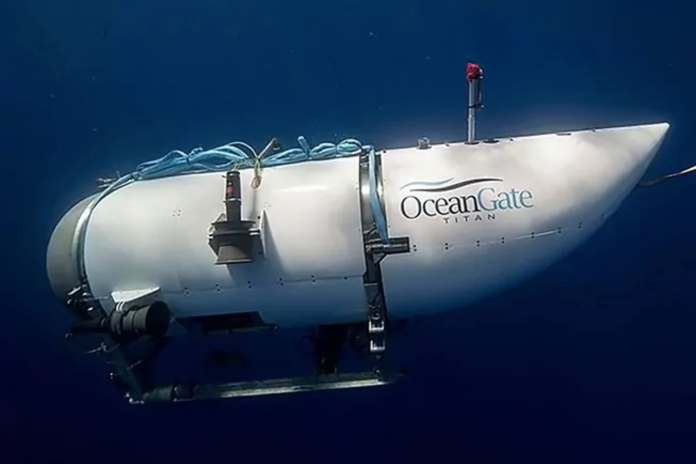The search for a submersible vessel that went missing near the wreck of the Titanic has been relocated after noises were heard in the area.
A Canadian P-3 plane – using sonar buoys – heard underwater sounds which US Navy experts are now analysing.
Crews have been exploring the source of the noise on Wednesday in a remote part of the North Atlantic.
The US Coast Guard did not provide further details on what the noises could be. According to an internal US government memo seen by several media outlets, banging was heard at 30-minute intervals on Tuesday.
Additional sonar was used four hours after the sounds were first detected and noises could still be heard, officials said.
Remotely operated vehicles (ROVs) have been deployed to the area but have not found anything further.
CNN and Rolling Stone first reported the potential development. However, according to both, the government memo does not say exactly when the sound was heard on Tuesday.
Deep-sea experts told the BBC that it is hard to determine what these noises might be without seeing the data – and the commander leading the search also confirmed the source was unknown.
Chris Brown, an explorer and friend of one of the crew, said he believed the reported sounds could be them.
“If you made a continuous noise, that’s not going to get picked up, but doing it every 30 minutes, that suggests humans,” he told the BBC. “I’m sure they’re all conserving oxygen and energy, because it’s cold and dark down there.”

Five people were on the vessel when contact was lost an hour and 45 minutes into its dive on Sunday. It was probably more than halfway down towards the Titanic wreck at that point, or about 1,900m (6,233ft) beneath the surface.
Search authorities estimate that if the vessel remains intact, it may have less than a day’s worth of oxygen left – meaning supplies are set to run out by about 10:00 GMT (06:00 EDT) on Thursday.
The five men on board include British businessman Hamish Harding, 58, British-Pakistani businessman Shahzada Dawood, 48, and his son Suleman, 18, French explorer Paul-Henry Nargeolet, 77, and Stockton Rush, 61.
Mr Rush is the chief executive of OceanGate, the company that owns the Titan vessel and runs tours to see the Titanic wreckage.
The group were sealed inside the sub using external bolts, meaning they cannot escape from it by themselves, even if it does resurface.

The search operation has so far failed to detect, but is expanding to include more resources and rescue expertise from private firms.
The mission is complex – there has been no communication from OceanGate’s Titan sub and visibility is quickly lost below the surface of the water, as light cannot penetrate that far.
There have also been poor weather conditions in the area, although the US Coast Guard said these improved on Tuesday.
An area of 7,600 sq miles (19,683 sq km) has been covered so far, which is larger than the US state of Connecticut.
“Our crews are working around the clock to ensure that we are doing everything possible to locate the Titan and the five crew members,” said Coast Guard Capt Jamie Frederick earlier.
US and Canadian agencies, navies and commercial deep-sea firms are all helping the operation, which is being run from Boston in Massachusetts. This has involved the use of military planes and a submarine, as well as sonar buoys that are dropped from aircraft or ships on the ocean surface for underwater acoustic research.
The Titanic, which was the largest ship of its time, hit an iceberg on its maiden voyage from Southampton to New York in 1912. Of the 2,200 passengers and crew on board, more than 1,500 died.
Its wreckage has been extensively explored since it was discovered in 1985.
OceanGate Expeditions charges guests $250,000 (£195,270) for a place on its eight-day expedition to see the famous wreck.


















![EC Announces Elimination of Indelible Ink in Upcoming Elections [Video]](https://newsonghana.com/wp-content/uploads/2023/12/image-351-218x150.png)










































![Daniel Amartey Angered Chelsea Fans, Here’s Why [Video]](https://newsonghana.com/wp-content/uploads/2021/05/Daniel-Amartey-100x70.jpg)
